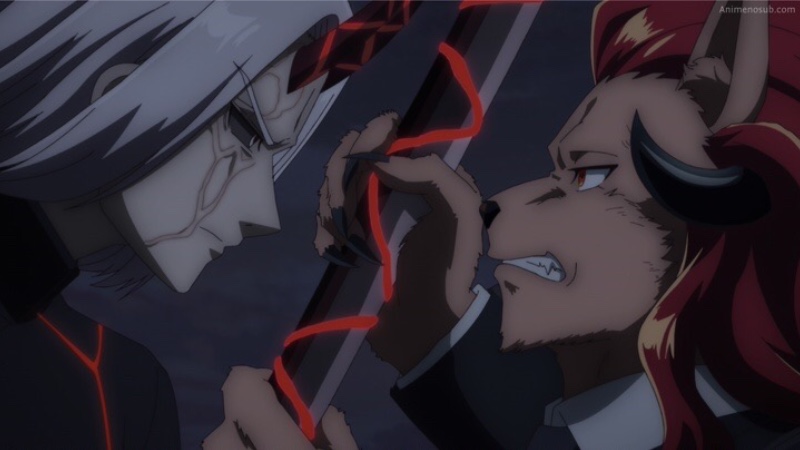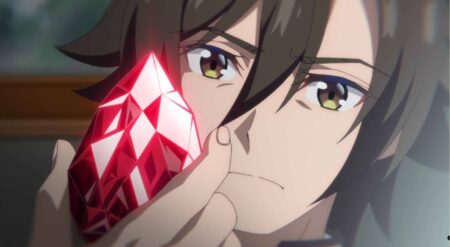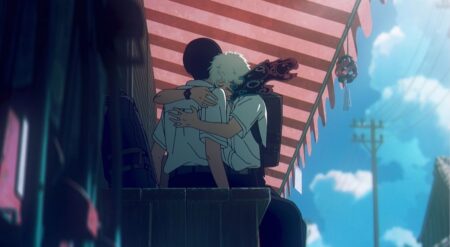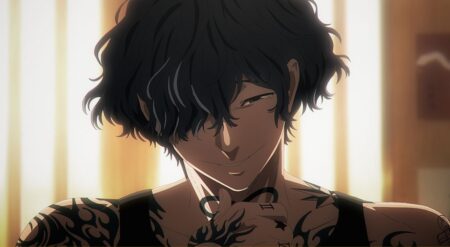
Wisteria is a poor girl forced to beg for charity from passing strangers in early industrialized England. Cruely mistreated by the priest who is supposed to be taking care of her, Wisteria has little to look forward to. At least until she meets Marbas, a demon she has the rare ability to see. Marbas begins visiting Wisteria so the two can converse together. But when a rich aristocrat threatens Wisteria, Marbas intervenes, forming a contract between the two. Now Wisteria is free to journey with Marbas to experience a larger world she never thought she’d know in The Tale Of Outcasts from Ashi Productions.
As Marbas and Wisteria strike out to explore the larger world around them, they ultimately end up discovering far more than they expect. Friends, enemies, grave dangers, and wonderful moments await the duo as they make their way through the season’s 13 episodes. But while the tale of friendship and triumph is solid enough at its core, there are several struggles that keep The Tale Of Outcasts from being all it might’ve been.
The most frequent problem that the series faces is its visual presentation. While the general design of the characters is fine, and the animation is smooth enough, the frequent physical conflicts the show depicts are never treated in a way that makes them feel as epic as the show tries to convince the viewer they are. Battles between demons are often little more than generic-looking energy blasts flying between combatants in a manner that felt old decades ago.
In a few spots, these shortcomings are even more noticeable when one of the series’ recurring groups The Sword Cross Knights, an order of demon hunters, brings their full strength to a battle. While one moment, lines of cannon are displayed along with riflemen and soldiers, all these seemingly vanish in an instant as the sequence seems to forget they were ever there, focusing back in on just two or three key combatants.

While the action side of The Tale Of Outcasts is generally wanting, there is some quality to be found in the emotional side of the season’s tale. Wisteria and Marbas are charming, and some of their best moments together land extremely well. While enemies mire their travels, they do manage to find some friends to share their journeys with, most notably a young lady named Diana and her demon companion Naberius. While Diana provides a wonderful secondary friend for Wisteria to interact with, Naberius and Marbas bring a faltering attempt at comedy that rarely works. The duo’s inane bickering at every possible moment never manages to amuse.
The other major emotional element that The Tale Of Outcasts hangs much of its narrative on is Wisteria’s brother Snow. Having been separated before the show starts, Wisteria and Snow are reunited early in the series because Snow is one of the Sword Cross Knights. Snow’s stance towards demons puts him at instant odds with Marbas, especially where Wisteria’s well-being is concerned. While there are moments where the conflict between Marbas and Snow delivers some strong emotions, the situation is often dealt with in a way that is far too quick and tidy. Snow has harbored a deep distrust of demons and those who side with them for a long time. How quickly he casts this aside feels less like character growth and more like an expedited resolution so the show can move on. This is too bad as Snow’s struggle to accept Wisteria’s situation could’ve given a lot more to the series than it ultimately does.
When all is said and done, The Tale Of Outcasts delivers a story with some emotional strengths while succeeding at little else. With so much falling short, what it gets right is never enough to truly recommend it, given how much great anime is currently out there.
The Tale Of Outcast is streaming on Crunchyroll.
The Tale Of Outcasts
-
Rating - 6/106/10
TL;DR
When all is said and done, The Tale Of Outcasts delivers a story with some emotional strengths while succeeding at little else. With so much falling short, what it gets right is never enough to truly recommend it, given how much great anime is currently out there.






